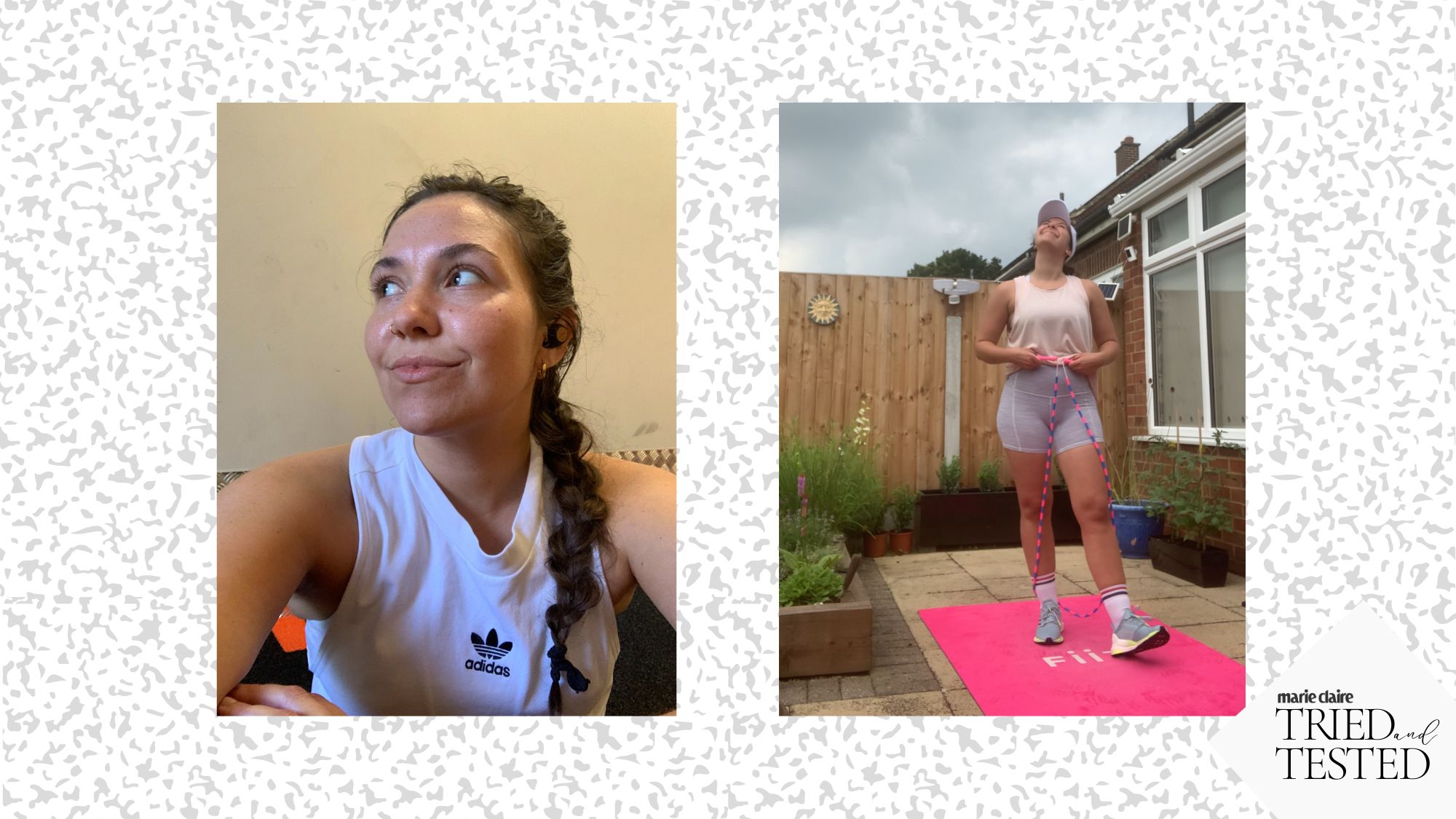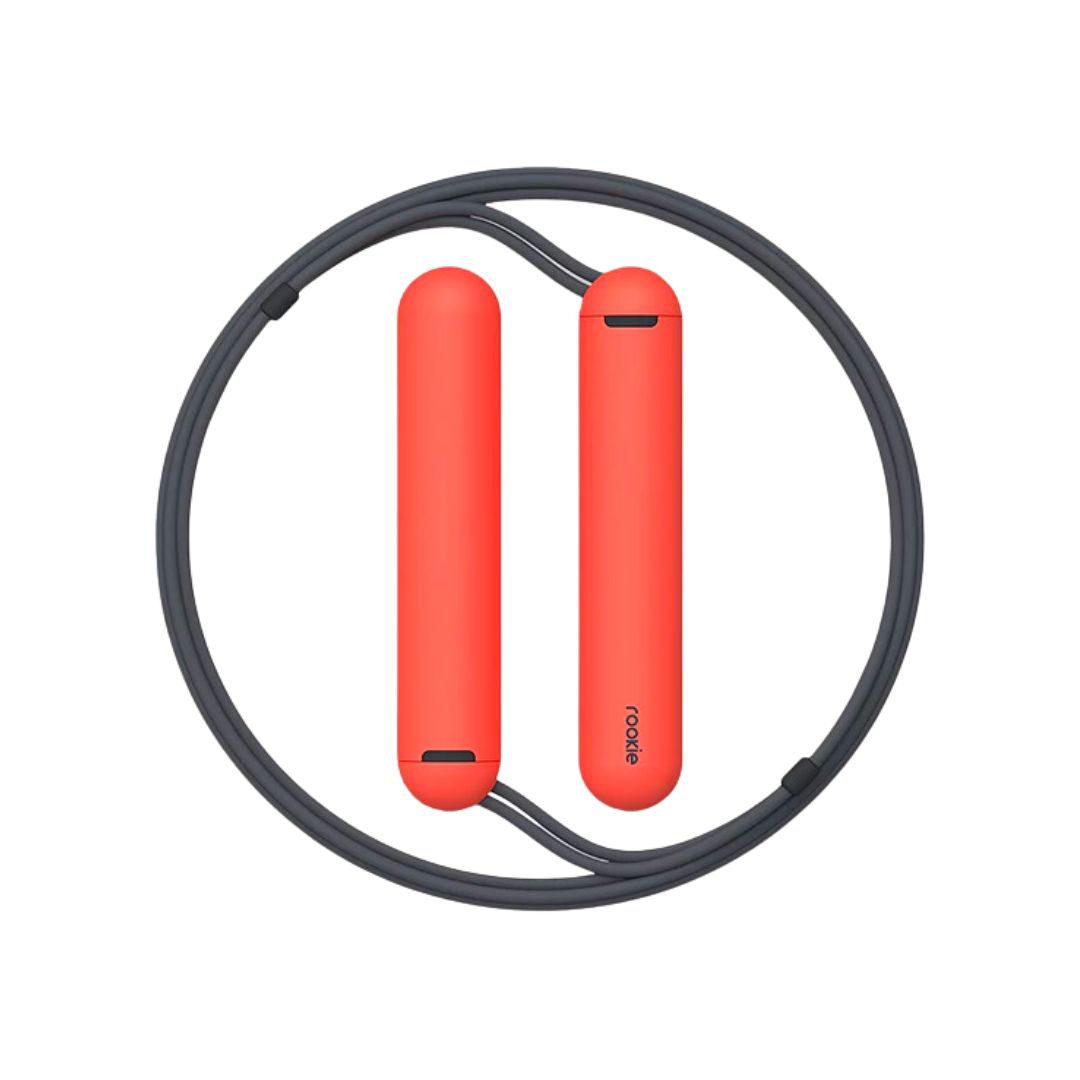I don’t have time to workout at the gym – so tried a week-long skipping challenge instead
I'd always said high-impact cardio wasn’t a bit of me - but I was wrong


Had you invited me to take part in a skipping challenge four or so years ago, I’d have politely declined (and probably laughed). High-impact cardio, I always said, wasn’t a bit of me. I knew and acknowledged the importance of engaging in cardio exercise for my physical and mental wellbeing but, besides dancing and walking, I’d never found a form that didn’t make me feel furious for every single second of the session. I hated that cardio made seemingly every cell in my body feel uncomfortable and, therefore, avoided it as much as possible.
Weight lifting, for the past nine years, has been my preferred activity. But, when the pandemic caused gyms to shutter for over a year, my training routine dissolved overnight. I did dumbbell circuits in my living room and tried to use the time to develop my push-up technique, but without a barbell, I began to feel bored. That’s when I first picked up a skipping rope properly for the first time.
I’d skipped in school playgrounds as a child and done sets of jump rope reps in boot camp classes in the past, but I’d never completed a skipping workout, let alone considered my technique. I began with short sessions in the back garden simply repeating the basic, two-foot bounce and eventually, over the course of months, learned various techniques – cross-overs, turns, double unders. I was skipping multiple times a week and felt the fittest I had since before the first lockdown.
I'm not the only one who's turned to the sport, either - the TikTok skipping challenge hashtag has tens of millions of views, and the workout has steadily grown in popularity thanks to jump rope influencers like Lauren Jumps. That's why, when MC UK Health Editor Ally Head suggested I try a skipping challenge this month, I jumped (pardon the pun) at the opportunity.
My routine has shifted a lot since lockdown - I’ve moved homes a few times and I’ve struggled to settle into a gym and a training schedule that suits my life right now, meaning I haven’t been consistent with any type of exercise, as much as I wish I could. That's why giving it a go made even more sense. Skipping is something I can do in my (dishevelled, but nonetheless sufficient) garden, saving time. So, I dusted off my rope. Here's how I got on.
Should I try a skipping challenge?
What are the benefits of skipping?
1. Improved bone density
Dense bones are less likely to break, especially as you age, which is why it’s so important to engage in weight-bearing and resistance exercises that reduce your risk of osteoporosis.
Skipping is one type of movement that has been positively associated with improvements in bone density. One study, which analysed the effects of jumping on hip bone mineral density (BMD) in perimenopausal women supports this. Results of a 16-week high-impact jumping programme showed that hip BMD can be improved by jumping ten or 20 times, twice daily, with 30 seconds of rest between each jump.
Celebrity news, beauty, fashion advice, and fascinating features, delivered straight to your inbox!
2. It may improve heart health
Aerobic exercise, such as skipping, helps to lower your resting blood pressure and heart rate and improve cholesterol levels.
Specifically, research has shown that skipping may be an effective intervention to improve risk factors, such as inflammation and blood pressure, associated with cardiovascular disease in prehypertensive adolescent girls.
3. It can improve coordination
Good coordination is important for everyday life as well as sport and activities (think: driving or carrying objects while walking), and skipping is a solid way to help improve it.
A 2015 study, published in the journal Sports Science & Medicine, revealed that skipping can enhance general motor coordination and balance in young athletes, compared with non-skipping teammates.
A post shared by Abbi Henderson (@abbi.le.henderson)
A photo posted by on
4. It may reduce anxiety
Research suggests that skipping enhances cognitive performance – specifically, exercise-specific improved attention performance and reduced anxiety.
5. It’s accessible
Last but by no means least, one of the many benefits of skipping is its accessibility. It doesn’t require a significant financial or time commitment and is doable in many outdoor (and some indoor) spaces.
This means it’s ideal for anyone short on time or unable to train in a fitness facility. Feel like you simply don't have time to head to the gym or like you'd rather avoid the membership fee? Skipping could be a great option for you.
8 things I learned by switching my gym workouts for a skipping challenge
1. I feel surprisingly great after doing high-impact cardio
For all my efforts to avoid it over the years, I actually do feel really good – physically and mentally – after doing high-impact cardio, in particular skipping. I imagine it’s akin to a runner’s high (which is not something I can say I’ve experienced personally, due to my lack of running), where you feel overwhelmed with positive emotions – pride, relief, joy.
After skipping, my body feels achy in the best way, but also strong and powerful. And the confidence boost is next level.
2. It’s important to ease in
Skipping is a high-impact aerobic activity that engages the entire body. This means that it’s taxing on the joints, and you therefore need to take precautions – particularly if you have a history of joint pain or injury.
It’s best to start slowly, if you’re new to skipping, by easing in with slow, five-minute sessions and gradually building up session length and/or intensity. It's also wise to consider the surface you're jumping on. Concrete can be hard on the joints, while grass, or using a mat, may be preferable.
For my first session back after a few months off, I did skipping intervals with long rest periods for around 40 minutes in total. Admittedly, probably a little too long for workout number one. However, rather setting myself strict windows for reps and recovery, I took an intuitive approach by resting when I felt like I needed to and until I had fully caught my breath again. The goal, for this skipping challenge, was simply to get – and enjoy – moving, so I didn’t feel the need to introduce strict rules surrounding reps.
This resulted in me being able to complete the session feeling challenged, but not overwhelmed, and without any pain or discomfort.
3. Skipping truly is a full-body workout
I’ve mentioned already that skipping targets the entire body, but there’s nothing quite like the physical reminder. Just a few minutes into a session, I could feel the tension from my calves to my core, and in my shoulders and forearms too. It’s not a workout for every single day (your body needs time to recover from high-impact activity), but skipping is a great exercise for getting every muscle moving.
A post shared by Abbi Henderson (@abbi.le.henderson)
A photo posted by on
4. You don’t need a gym to do cardio at home
Running on a treadmill and cycling on a static bike aren’t the only ways to do aerobic exercise at home – and they certainly aren’t the most practical for those with small living spaces and modest budgets.
Skipping offers an excellent alternative for anyone wanting to get their sweat on without a gym membership or expensive equipment. Set up in your garden, if you have one, or take your rope to your local park to get some skips in.
5. Recovery is key
The morning after my first skipping session, I felt great. In fact, I forgot I’d even done it. The day after that, however, I awoke with DOMs in both calves and extremely stiff legs – the kind that makes even walking from sofa to loo a struggle.
This isn’t unusual for me – and especially so when I’m skipping regularly and challenging my body. I took it as a sign that I needed a bit more care where recovery is concerned, so I prioritised my protein intake, hydration, and low-impact activity, such as walking.
Ample rest and recovery between sessions allowed me to continue throughout the skipping challenge without increasing my risk of injury.
6. Nothing hurts quite like a rope whip
It’s a bit of an unavoidable part of skipping, but nonetheless - 0/10, I do not recommend whipping yourself with a skipping rope. The stomach-churning, breath-snatching feeling when the rope snags you at speed is unlike any other pain I’ve experienced.
That said, the more you practice, the less you'll experience this. A word from the wise.
7. Sometimes switching up your routine can help
We have it drummed into us that consistency is key if we’re working towards a fitness goal – and it’s true. However, sometimes we need to shake things up and experiment with different styles of exercise or training formats in order to feel refreshed and inspired. This is exactly what the skipping challenge did for me.
Weight lifting has lost its lustre a bit for me, as I struggle to find a facility I feel comfortable in and settle on goals I’m motivated to achieve. In the meantime, I just want to enjoy being active and moving my body.
Over the course of the week, I began to feel more excited about my skipping sessions – eagerly anticipating the thrill of experimenting with tricks (ones I could do a couple of years ago but haven’t tried since) and the endorphin release that came afterward. It made exercise feel fun, playful and without pressure, something that’s been lacking from my training routine for a while.
8. It’s important to find exercise fun
Which brings me onto the importance of doing exercise that you enjoy.
Research supports the theory that partaking in a type of movement you enjoy and find stimulating can encourage you to engage in it more often.
I realised I don’t need to force myself to run or do burpees and other styles of exercise I don’t enjoy. There are physical activities that offer many health benefits that feel incredibly fun to me – and one of them is skipping.
Shop our go-to skipping aids now:
Should I try a skipping challenge?
If you're looking to try something new or increase your aerobic exercise, skipping may be an ideal activity for you.
Don't rush into it – start with short and slow sessions, and speak to a PT if you'd like helping with integrating it into your workout schedule. Seek the advice of a professional before skipping if you suffer joint pain or have a history of injury.

Abbi Henderson is a freelance journalist and social media editor who covers health, fitness, women’s sport and lifestyle for titles including Women's Health and Stylist, among others.
With a desire to help make healthcare, exercise and sport more accessible to women, she writes about everything from the realities of seeking medical support as a woman to those of being a female athlete fighting for equality.
When she’s not working, she’s drinking tea, going on seaside walks, lifting weights, watching football, and probably cooking something pasta-based.


